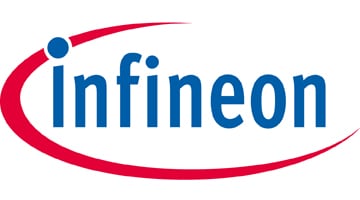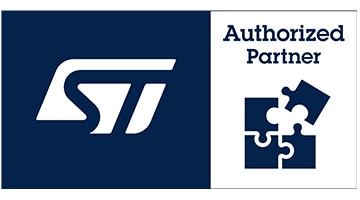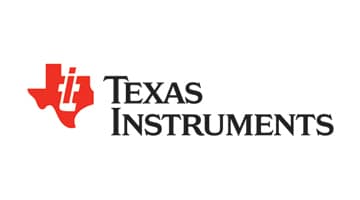Analog Devices LT8603 | Demoboard DC2469A
42V, Low IQ, Quad Output Triple Monolithic Buck Converter and Boost Controller
Overview
| Topology | SEPIC Buck-Boost Topology |
| Input voltage | 3-42 V |
| Switching frequency | 400-2000 kHz |
| Output 1 | 8 V / 1.5 A |
| IC revision | 1 |
Description
Demonstration circuit 2469A features the LT®8603 withtriple monolithic buck regulators and the boost channel asSEPIC. The demo circuit is designed for 8V, 5V, 3.3V, and1.8V outputs from a nominal 12V input. The 4th channel isset as a SEPIC converter and its output is regulated at 8Vover a wide input range. The two high voltage buck regulatorsare powered from VOUT4. VOUT1 is regulated at 5Vwith 1.5A maximum output load current, and VOUT2 isat 3.3V with 2.5A maximum output load current. The lowvoltage buck is powered from VOUT2 (3.3V), and the outputVOUT3 is regulated at 1.8V with 1.8A maximum loadcurrent. Thanks to the SEPIC converter, all four outputscan ride through a cold crank in automotive applicationswhile providing regulated output voltages.All regulators are synchronized to an internal oscillatorthat can be programmed with one resistor at RT pin.Programmable frequency allows optimization betweenefficiency and external component size. To avoid the audioband, the DC2469A sets the switching frequency at 2MHzfor the three buck regulators, and the SEPIC converter isat 400kHz. At all frequencies, a 180° phase shift is maintainedbetween 1 and 2 channels, reducing the input peakcurrent and voltage ripple. Many popular features such as soft-start, cycle-by-cyclecurrent limit, power good for each of the four channelsare packed in the 40-lead 6mm × 6mm QFN package tosimplify the complex design of quad-output power converters.Each buck regulator can be independently disabledusing its own TRKSS or RUN pin. The SEPIC can bedisabled by pulling down both the FSEL4A and FSEL4B.The EN/UVLO can be used to shut down the circuit toreduce the input current to 1µA.Table 1 summarizes the performance of the demo board atroom temperature. The demo circuit can be easily modifiedfor various automotive, transportation and industryapplications. For applications that need 4th channel configuredas a boost converter, the DC2114A should be used.The LT8603 data sheet gives a complete description ofthe part, operation and application information. The datasheet must be read in conjunction with this quick startguide for DC2469A.
Features
- Flexible Power Supply System Capable of Four
- Regulated Outputs with VBATT << VOUT
- Two High Voltage Synchronous Buck Regulators
- 3V to 42V Input Voltage Range
- Output Currents Up to 2.5A and 1.5A
- One Low Voltage Synchronous Buck Regulator
- 2.6V to 5.5V Input Voltage Range
- Output Currents Up to 1.8A
- One Boost Controller Allows Buck Converters to Regulate with VBATT << VOUT
- Selectable Burst Mode® Operation Allows Low 28μA IQ with High Voltage Channels Active
- Programmable Power-On Reset
- Individual Channel Power Good Indicators
- Step-Down Switching Frequency: 250kHz to 2.2MHz
- Available in 40-Lead QFN (6mm × 6mm) Package
Typical applications
- Last-Gasp CPU Power Hold-Up
- Industrial Controls and Power Supplies
- Automotive Stop-Start and Cold Crank Ride Through
More information
Products
| Order Code | Datasheet | Simulation | Downloads | Status | Product series | L (mm) | f (mm) | Z @ 100 MHz (Ω) | Zmax (Ω) | Test Condition Zmax | IR 2 (mA) | RDC max. (Ω) | Type | L1 (µH) | L2 (µH) | IR (mA) | ISAT (A) | RDC1 typ (Ω) | RDC2 typ (Ω) | RDC1 max (Ω) | RDC2 max (Ω) | fres (MHz) | Pins (pcs) | Rows | H (mm) | Gender | IR (mA) | Packaging | Samples | |
|---|---|---|---|---|---|---|---|---|---|---|---|---|---|---|---|---|---|---|---|---|---|---|---|---|---|---|---|---|---|---|
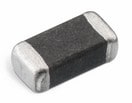 | 742792150 | SPEC | 9 files | Active i| Production is active. Expected lifetime: >10 years. | WE-CBF SMT EMI Suppression Ferrite Bead | 3.2 | – | 80 | 160 | 550 MHz | 4000 | 0.02 | High Current | – | – | 2800 | – | – | – | – | – | – | – | – | 1.1 | – | 2800 | – | ||
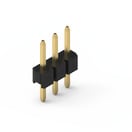 | 62000311121 | SPEC | – | 6 files | Active i| Production is active. Expected lifetime: >10 years. | WR-PHD 2.00 mm THT Pin Header | 6 | – | – | – | – | – | – | Straight | – | – | – | – | – | – | – | – | – | 3 | Single | – | Pin Header | 2000 | Bag | |
 | 702931000 | SPEC | – | 3 files | Active i| Production is active. Expected lifetime: >10 years. | WA-SNSR Self-Retaining Spacer | 6.4 | 4.8 | – | – | – | – | – | – | – | – | – | – | – | – | – | – | – | – | – | – | – | – | – | |
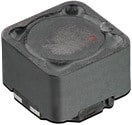 | 7448700015 | SPEC | 9 files | Active i| Production is active. Expected lifetime: >10 years. | WE-DD SMT Shielded Coupled Inductor | 12.5 | – | – | – | – | 8600 | 0.016 | Crossed | 1.5 | 1.5 | 8600 | 17.5 | 0.012 | 0.012 | 0.016 | 0.016 | 60 | – | – | 8.5 | – | 8600 | – |
| Order Code | Datasheet | Simulation | |
|---|---|---|---|
 | 742792150 | SPEC | |
 | 62000311121 | SPEC | – |
 | 702931000 | SPEC | – |
 | 7448700015 | SPEC |
| Samples |
|---|
| Order Code | Datasheet | Simulation | Downloads | Status | Product series | L (mm) | f (mm) | Z @ 100 MHz (Ω) | Zmax (Ω) | Test Condition Zmax | IR 2 (mA) | RDC max. (Ω) | Type | L1 (µH) | L2 (µH) | IR (mA) | ISAT (A) | RDC1 typ (Ω) | RDC2 typ (Ω) | RDC1 max (Ω) | RDC2 max (Ω) | fres (MHz) | Pins (pcs) | Rows | H (mm) | Gender | IR (mA) | Packaging | Samples |
|---|

